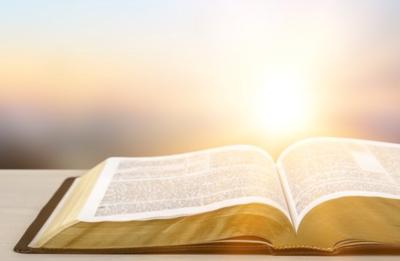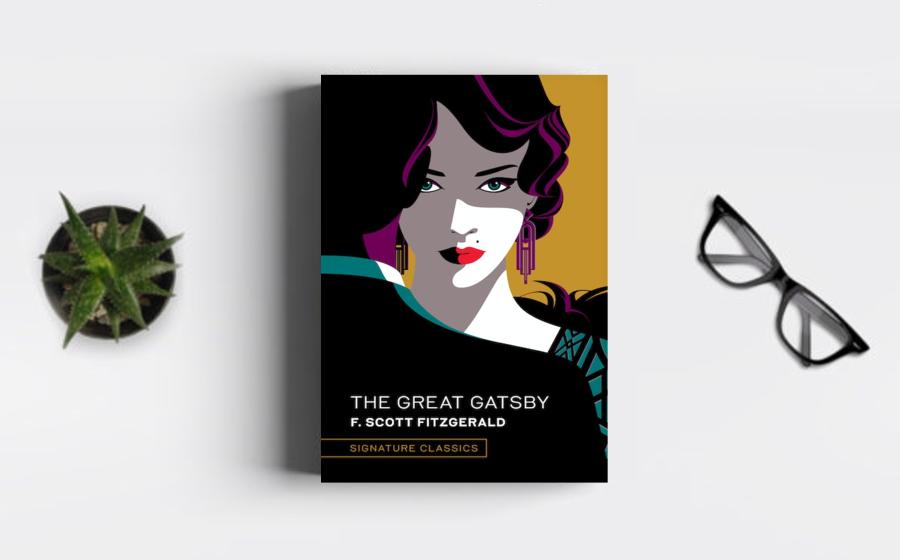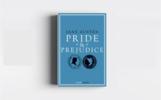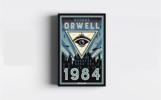"The Great Gatsby" by F. Scott Fitzgerald is a
quintessential American novel that captures the essence
of the Jazz Age while laying bare the illusions of the
American Dream. Immersing
oneself in the opulent world of Jay Gatsby, Nick
Carraway, and Daisy Buchanan is to navigate a narrative
where wealth, decadence, and unrequited love converge.
Fitzgerald's poetic prose and incisive social commentary
propel "The Great Gatsby" into the echelons of the Top
10 Books of all time. It is not merely a novel; it is a
lyrical elegy that echoes the aspirations and
disillusionments of an era, transcending its temporal
setting to speak to the perennial themes of human
ambition and the fragility of dreams.
Fitzgerald's prose in "The Great Gatsby" is a lyrical
tapestry that evokes the rhythms of the Jazz Age. I am struck by Fitzgerald's
ability to infuse each sentence with a poetic cadence,
transforming the narrative into a symphony of words. The
author's keen attention to detail and evocative
descriptions create a vivid tableau of the Roaring
Twenties, transporting readers to the glitzy parties of
Long Island, the shimmering lights of New York City, and
the elusive green light at the end of Daisy Buchanan's
dock.
The novel's opening lines,
with Nick Carraway's reflection on advice from his
father, "Whenever you feel like criticizing anyone, just
remember that all the people in this world haven't had
the advantages that you've had," set the tone for
Fitzgerald's exploration of privilege, morality, and the
elusive pursuit of the American Dream. The author's
prose, characterized by its elegance and economy,
becomes a vehicle for both social critique and an
intimate examination of the characters' inner lives.
Nick Carraway, the novel's
narrator, serves as a moral compass in the tumultuous
sea of excess and decadence that is the world of "The
Great Gatsby." I
appreciate Fitzgerald's choice of Nick as the observer
and chronicler of the events surrounding Jay Gatsby and
the Buchanan family. Nick's Midwestern sensibilities and
his outsider status in the East Egg social milieu
provide readers with a lens through which to view the
excesses and moral ambiguities of the era.
Nick's
narrative perspective introduces an element of
reflection and moral inquiry into the novel. His
observations, tinged with both admiration and
disillusionment, invite readers to question the values
of the Jazz Age and the consequences of unbridled
ambition. Nick becomes not only a conduit for the
unfolding drama but a voice that echoes the novel's
underlying themes of disillusionment, morality, and the
fragility of human aspirations.
At the heart of
"The Great Gatsby" is the enigmatic and larger-than-life
Jay Gatsby - a self-made millionaire with a mysterious
past and an unrelenting obsession with the green light
across the bay. I am
fascinated by Fitzgerald's portrayal of Gatsby as both a
symbol of the American Dream and a cautionary tale of
its inherent illusions.
Gatsby's rise from
obscurity to opulence, driven by a relentless pursuit of
wealth and social status, epitomizes the American
Dream's promise of self-invention. However, Gatsby's
character becomes a poignant exploration of the
hollowness that can accompany the realization of one's
dreams. The extravagant parties, the lavish mansion, and
the intricate web of deception surrounding Gatsby mask a
profound loneliness and a yearning for a past that
remains forever out of reach.
Fitzgerald deftly
exposes the gap between the illusion of success and its
existential emptiness, inviting readers to reflect on
the costs of relentless ambition and the ephemeral
nature of material wealth. Gatsby's tragedy lies not
only in his unrequited love for Daisy but in the
realization that the American Dream, as pursued in the
Jazz Age, is a mirage that vanishes upon closer
inspection.
Daisy Buchanan, Gatsby's elusive love
interest, is a symbol of unattainable glamour and the
shallow allure of wealth.
I find Fitzgerald's characterization of Daisy to be a
nuanced exploration of the archetype of the "golden
girl" in American literature. Daisy's charm, beauty, and
wealth make her a coveted prize for Gatsby and a
representation of the idealized American woman.
However, beneath the
veneer of Daisy's charm lies a complex character
grappling with her own disillusionments and societal
expectations. Her inability to choose between Gatsby and
her husband, Tom Buchanan, becomes a reflection of the
societal constraints placed upon women in the 1920s.
Daisy's character is both a victim and a perpetuator of
the illusion of the American Dream, embodying the
contradictions inherent in the pursuit of happiness
through external markers of success.
Tom
Buchanan, Daisy's husband, serves as a stark contrast to
Gatsby's nouveau riche persona. I am intrigued by Fitzgerald's portrayal of Tom
as the embodiment of old money, privilege, and
entitlement. Tom's brutish demeanor, casual racism, and
extramarital affairs highlight the moral decay that can
accompany inherited wealth and social status.
Fitzgerald uses Tom as a vehicle
to critique the moral bankruptcy of the upper echelons
of society. Tom's callous treatment of others, his
disdain for Gatsby's newfound wealth, and his
unapologetic sense of entitlement expose the fissures
beneath the facade of respectability. In juxtaposition
to Gatsby's aspirational journey, Tom represents the
entrenched social structures that resist change and
perpetuate a cycle of privilege and moral decay.
The green light at the end of Daisy Buchanan's dock
becomes a recurring symbol in "The Great Gatsby"
- a
beacon that embodies Gatsby's unattainable dream and the
elusive nature of the American Dream itself. I appreciate Fitzgerald's use
of symbolism to convey deeper layers of meaning. The
green light, visible from Gatsby's mansion, becomes a
metaphor for both aspiration and the inevitable distance
between dreams and reality.
The green light
represents Gatsby's yearning for a future that remains
forever out of reach. It encapsulates the ephemeral
nature of the American Dream, suggesting that the
pursuit of an idealized future can become a perpetual
journey with no true destination. The symbolism of the
green light invites readers to contemplate the
intangible nature of dreams and the complexities of the
human psyche.
The valley of ashes, a desolate
industrial wasteland between West Egg and New York City,
serves as a stark contrast to the opulence of Gatsby's
world. I am impressed by
Fitzgerald's use of the valley of ashes as a symbolic
representation of the moral decay and social inequality
that lurk beneath the surface of the Jazz Age.
The valley of ashes becomes a metaphor for
the consequences of unbridled capitalism, where the
pursuit of wealth leads to environmental degradation and
societal neglect. The desolation of the landscape,
juxtaposed against the extravagance of Gatsby's parties,
serves as a reminder of the hidden costs of the American
Dream. Fitzgerald's inclusion of the valley of ashes
adds a layer of social critique to the novel, prompting
readers to consider the broader implications of wealth
disparity and societal indifference.
"The Great
Gatsby" is not only a narrative masterpiece but also a
social critique that reflects the zeitgeist of the Jazz
Age. I am intrigued by
Fitzgerald's ability to capture the spirit of an era
marked by excess, hedonism, and the collision of
traditional values with the pursuit of modernity. The
novel becomes a lens through which readers can witness
the contradictions and complexities of 1920s America.
Fitzgerald's portrayal of the Jazz Age is not merely
a backdrop but an integral part of the narrative. The
extravagant parties, the frenetic pace of city life, and
the clash of old and new money become elements that
shape the characters and their destinies. The social
commentary embedded in the novel transcends its
historical setting, resonating with readers across
generations as a reflection of the enduring tensions
between tradition and progress.
The tragic
denouement of "The Great Gatsby" serves as the
inevitable unraveling of the illusions that have
sustained the characters throughout the narrative. I find Fitzgerald's handling of
the novel's conclusion to be both poignant and
revelatory. The collision of dreams with reality becomes
an inexorable force, leading to Gatsby's demise and the
disintegration of the illusions that have propelled the
characters forward.
Gatsby's death, the exposure
of Tom's moral shortcomings, and Daisy's retreat into
the safety of her wealth mark a turning point in the
narrative. Fitzgerald orchestrates a symphony of tragic
inevitability, inviting readers to confront the
consequences of the characters' choices and the
fragility of the dreams that have defined their lives.
The denouement becomes a moment of collective reckoning,
where the illusions of the American Dream are shattered,
revealing the harsh realities that lie beneath the
surface.
Fitzgerald's lyricism, nuanced characters, and
social critique elevate "The Great Gatsby" to a work
of art that transcends its role as a mere reflection
of a bygone era. The novel becomes a mirror that
reflects the aspirations and contradictions of
humanity, prompting readers to ponder the enduring
relevance of its themes. "The Great Gatsby" is not
just a novel about the 1920s; it is a meditation on
the complexities of the human experience - a narrative
symphony that echoes through the corridors of
literary history, inviting readers to immerse
themselves in the timeless exploration of dreams and
their inevitable collision with reality.
Fitzgerald's masterpiece endures as a testament to
the fragility of illusions, the pursuit of identity,
and the eternal dance between aspiration and
disillusionment.






